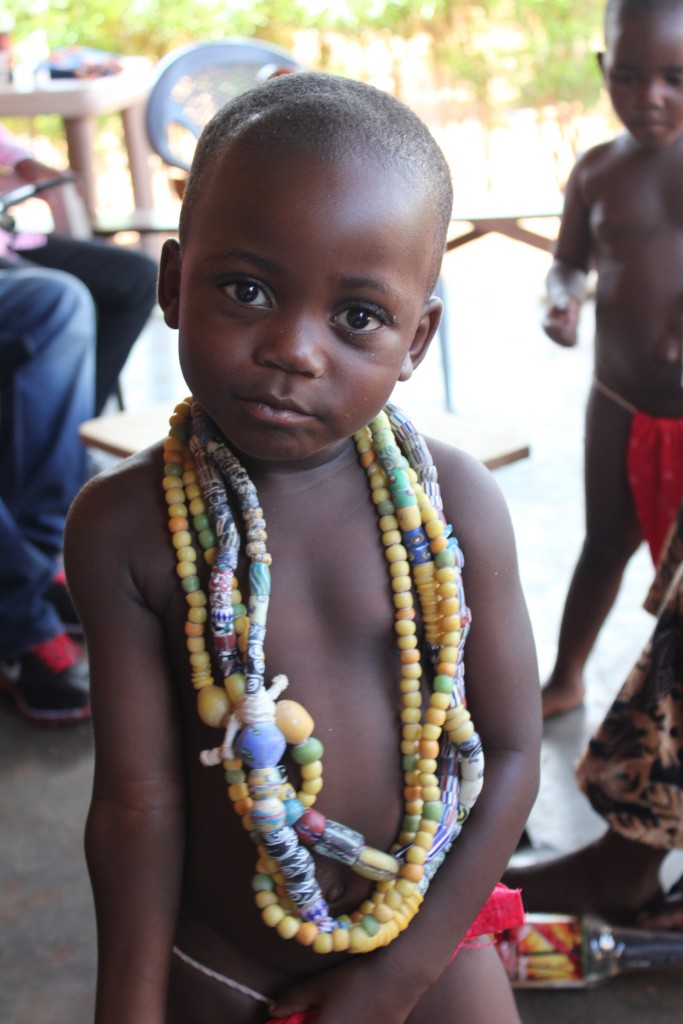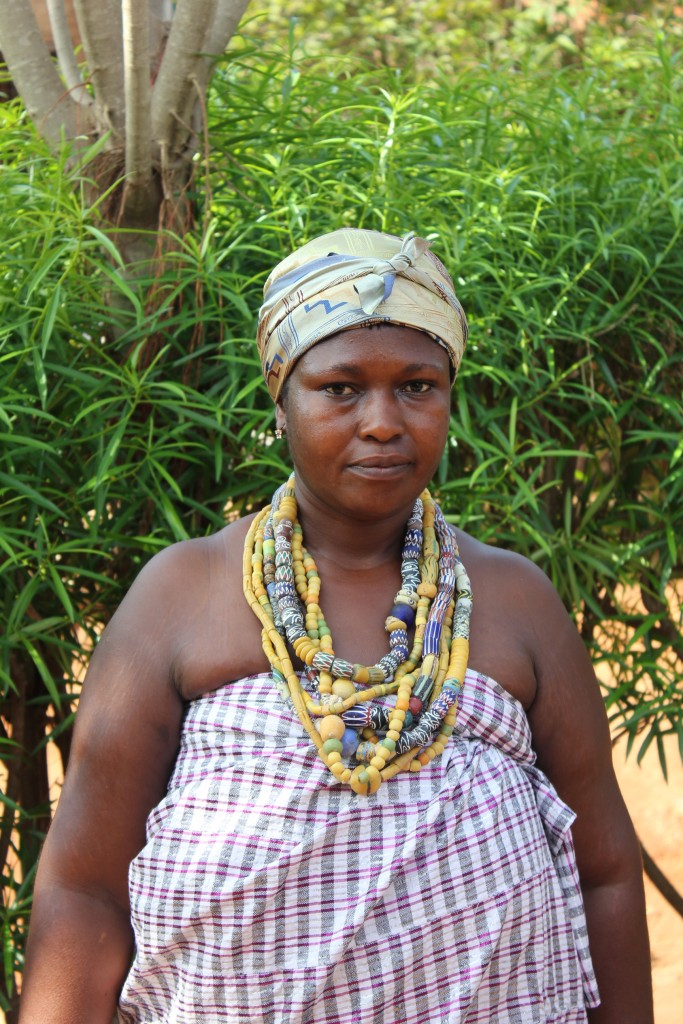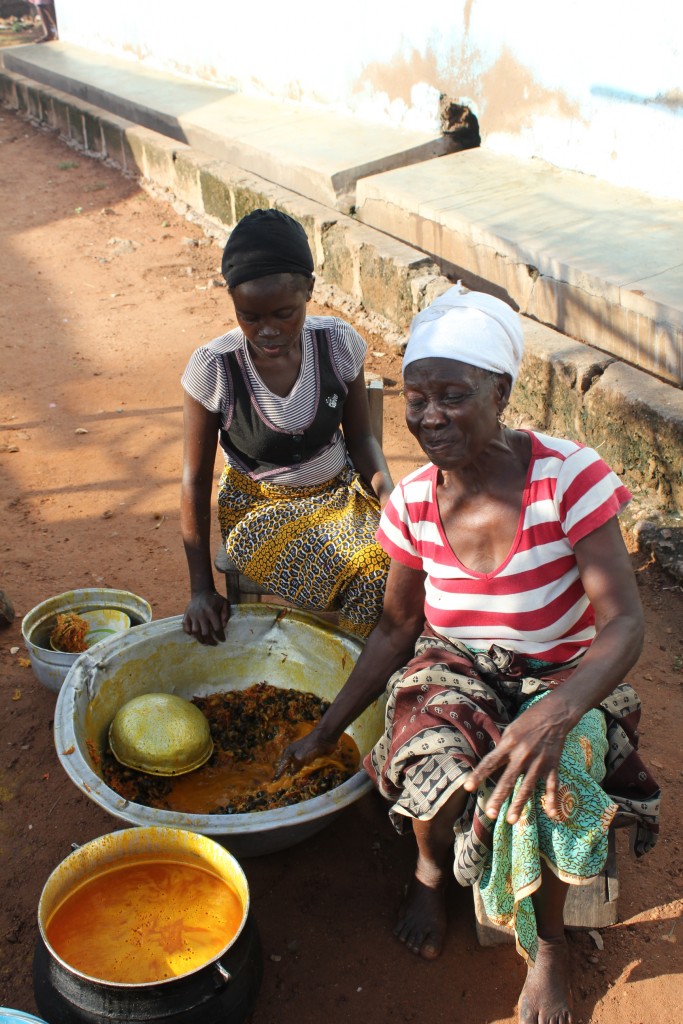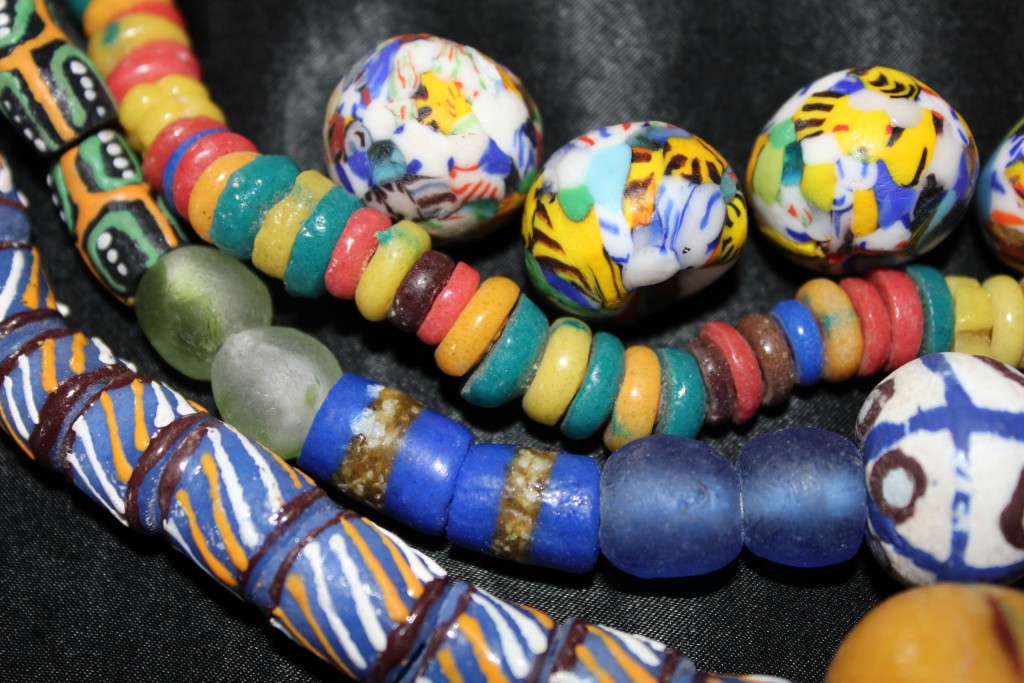In Ghana, beads have for centuries held symbolic value, which makes them so important in all grand ceremonial occasions in Ghanaians life. These can be everything from formal state ceremonies to communal ones as birth, coming of age, marriage or death. The colour of beads, their shape, size and the materials out of which they are made are all imbued with deep meaning. Craftsmen of the Krobo tribe are among the oldest and most famous makers of wonderfully colourful powdered glass beads in Africa where in particular the old Bodom beads, large-sized, biconical powder glass beads, are greatly treasured and believed to have magical and medicinal powers.
Becoming of age is an important occasion for many African cultures, including the Krobo people and puberty for girls in particular, leads to the profuse use of beads. The finery of a family heirloom is often complemented by the purchase of beads for the graduating initiate. The Dipo ceremony – one of the most important events of the year, is held every spring and symbolizes a girl’s coming of age. The ceremony has changed from being a nude parading of the young women with many rituals going on for many days, to be a family gathering and celebration. The last day of Dipo, the girls gather at the village common, wearing the best clothes their family can afford as well as multiple strains of beads around the neck and also a girdle made of several layers of heavy beads around their waist. These beads have been passed down through many generations and are symbols of the families’ wealth. The colours of the beads are important for the occasion they are used; yellow is a very much used colour and represent wealth, maturity and prosperity. Blue beads are associated with affection and tenderness, and white and blue in combination evoke femininity and worn by women.





